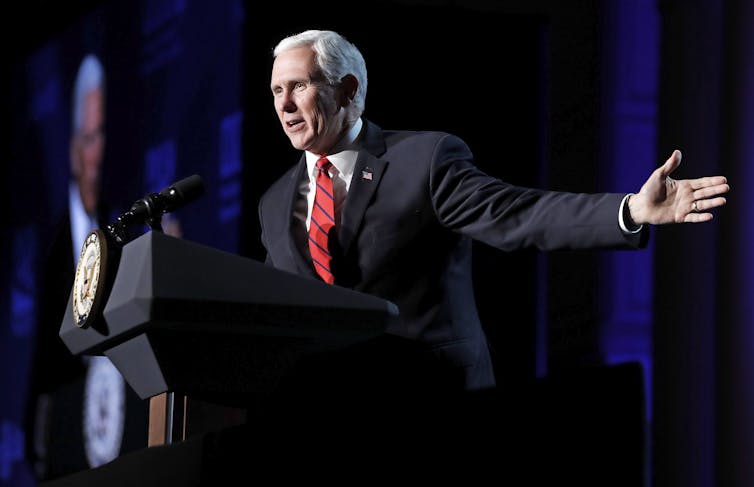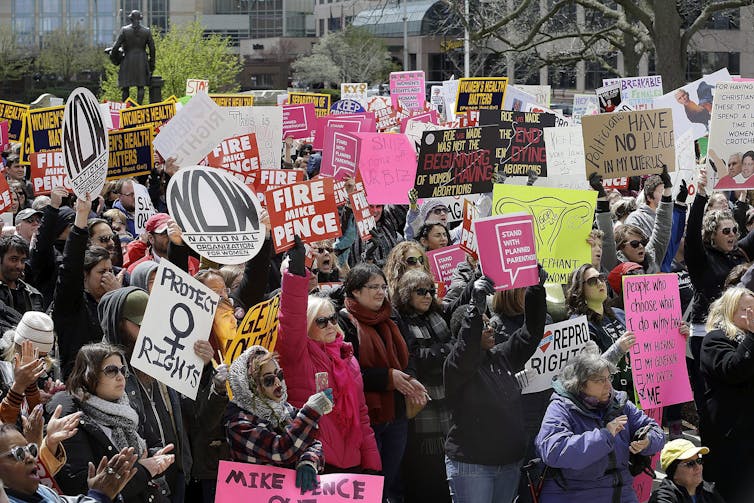By Melissa Haussman
Last month, the U.S. administration officially announced its intention to block federal family planning funds for organizations that provide abortion referrals. President Donald Trump and his anti-choice Vice-President Mike Pence first presented the idea last spring.
If successful, it would mean a dramatic drop in funding for Planned Parenthood and restricted access for individuals to health services at Planned Parenthood clinics. There is nothing original about this policy move: it is old and tired. It is also harmful to the citizens of the United States.
Planned Parenthood is a century-old organization, based on the first contraception clinic in Brooklyn, N.Y. Founded by public health nurse Margaret Sanger, her sister Ethel Byrne and activist Fania Mindell in 1916, it was the inspiration for the Planned Parenthood Federation of America formed decades later.

Planned Parenthood occupies a central role in the provision of comprehensive sexuality education and reproductive services for American women.
Approximately 20 per cent of women in the U.S. will rely on a service performed by Planned Parenthood in her lifetime. Nearly half of its client base is related to sexually transmitted infection (STI) testing and treatment, with another 27 per cent for contraception.
This means about three-quarters of Planned Parenthood Federation’s caseload is related to sexual health. Only three per cent of its client base visits it for abortion-related services.
At least 60 per cent of Planned Parenthood clients use either Medicaid funding or Title X.
Title X
Designed in 1970, and supported by both Democrats and Republicans (and Republican President Richard Nixon) to prioritize the needs of low-income families or uninsured people, Title X is the only federal grant program that provides individuals with comprehensive family planning and related preventive health services.
In the U.S., it has been the most comprehensive and effective source of public funds for reproductive rights care. Unlike the more restrictive Medicaid health-care program for those below the poverty line, Title X has no eligibility criteria.
Almost half (42 per cent) of clients accessing Title X-funded clinics have no health insurance, 38 per cent are covered by Medicaid and 19 per cent have private health insurance, according to the National Family Planning and Reproductive Health Association. More than 50 per cent of Title X patients identify as Black or Latino.
Recycling old policies
Trump and Pence have recycled a policy fragment from the end days of the Reagan administration.
In 1988, the secretary of health issued a new regulation that prohibited Title X projects from engaging in counselling, referrals or activities that advocated abortion as a method of family planning. That 1988 law required all Title X projects “to maintain an objective integrity and independence from the prohibited abortion activities by the use of separate facilities, personnel and accounting records.”
During the conservative Congresses of the 1980s and 1990s, Title X family planning funding suffered severe cuts. By 1999, taking inflation into account, the program’s funding level was 60 per cent lower than it was in 1979.
But even with the funding cuts, as of 2016, Title X funded 91 family-planning service grantees, of which 43 were non-profit clinics such as Planned Parenthood.
In 1988, after the first iteration of the anti-Title X domestic “gag rule” was announced, a coalition of pro-choice groups, including Planned Parenthood, challenged it in court.

Unfortunately, the Supreme Court’s 1991 Rust v. Sullivan decision granted deference to the secretary’s interpretation of Title X, citing “lack of Congressional intent in the legislative history.”
In affirming the District Court’s grant of summary judgment to the secretary, the Court of Appeals held that the regulations were a permissible construction of the statute and consistent with the First and Fifth Amendments.
After the Rust vs. Sullivan decision, both houses of Congress voted to overturn the domestic gag rule. However, President George H.W. Bush vetoed the vote.
In January 1993, in his first week in office, President Bill Clinton repealed it and the restrictive interpretation never had a chance to become fully implemented. However, both Pence and Trump wish to reactivate it now.
Given the Supreme Court precedent and the current makeup of the Supreme Court, it is likely this iteration of the domestic gag rule will become policy.
While pro-choice groups have already announced challenges, the court’s history of interpretation on the gag rule doesn’t bode well for those supporting reproductive choices and access for all.
This article is republished from The Conversation under a Creative Commons license. Carleton University is a member of this unique digital journalism platform that launched in June 2017 to boost visibility of Canada’s academic faculty and researchers. Interested in writing a piece? Please contact Steven Reid or sign up to become an author.
All photos provided by The Conversation from various sources.
![]()
Tuesday, March 19, 2019 in The Conversation
Share: Twitter, Facebook



